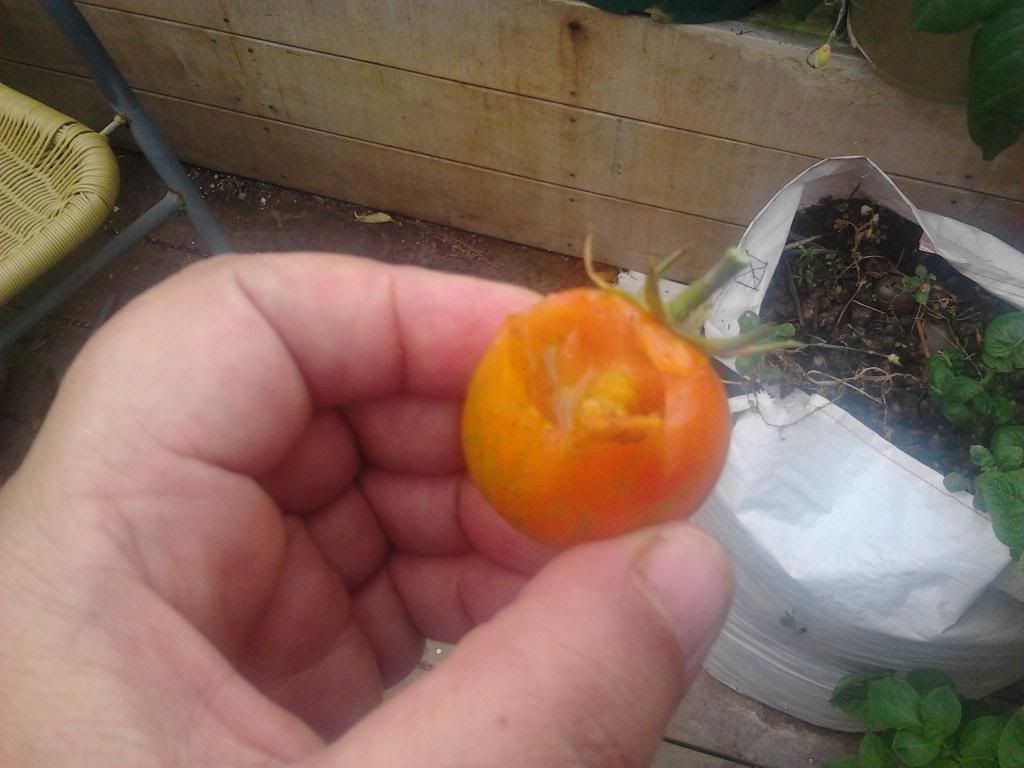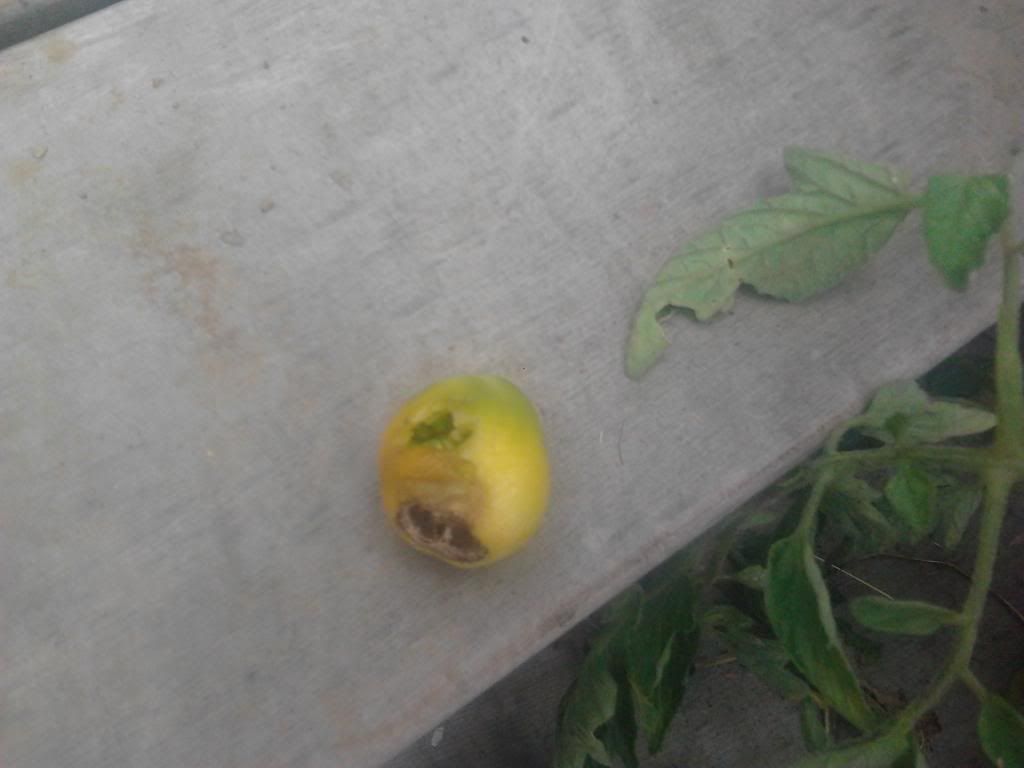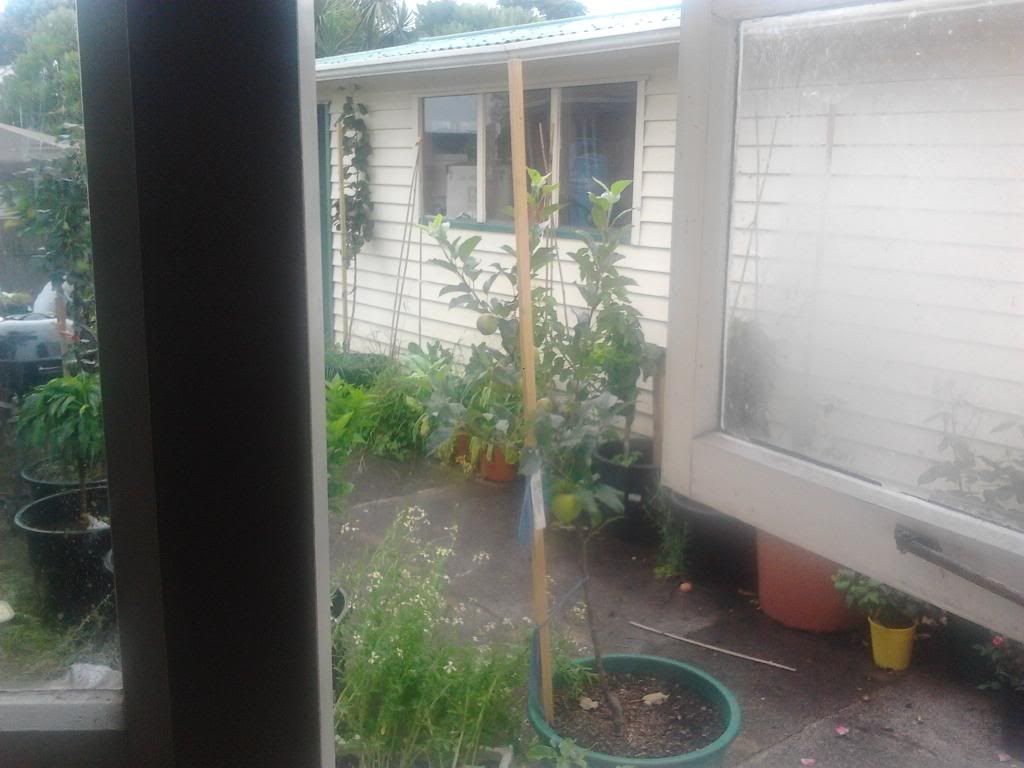So far with the tomatoes its birds 3, me nil, and since the birds aren't the ones who spent all the money on sheep pellets and certainly weren't out there every night watering, I feel somewhat that I have gotten the rough end of the stick. Since standing outside in all weathers screaming and flailing like a dervish to keep the larcenous feathery miscreants off(and yes, you have to chase them off, they ignore yelling), which would i feel only have the net result of convincing the neighbors finally and completely that "yes shes a little odd", some sort of other security must be arranged. Given the cheek of these birds I'm thinking electric netting, razor wire and maybe a shark moat lol.
As it is, the little feathery b.......pests, have had more of my alpine strawberries than I have, on top of the tomatoes. Now, normally they wouldn't bother them, since they're the white kind and conventional wisdom has it that the birds don't recognise that they're ripe.....well, they do now. I'm almost getting used to walking out onto the deck and having stuffed blackbirds making rather ponderous escapes from the depths of my strawberry plants!
 |
| tomato casualty |
TRYING for red, tho none have made it yet without holes!!
 |
| victim of "The Birds" |
I planted a lot of tomato seedlings that came up this spring and I wasn't sure what they were, tho I have a better idea now. I definitely have a couple of Garden Peach. This is an old heirloom variety that has a furry fruit, that is yellow with a red blush. I also have a couple of plants of a Roma type though I'm not sure if they're the red, yellow or orange type. all of which I've planted at one time or another. The old kinds of tomato are endlessly fascinating, and i always end up buying WAY too many seeds but i just cant help myself. With the heirloom tomatoes you have every colour and shape and size under the sun, and a real variation in flavours too, from really. really sweet, like the orange "Sungold" to more rich and "tomatoey" flavours like the various "Brandywine" be they black, pink or yellow tomatoes, and from big beefsteak types like Great White" which is, as the name suggests, white, turning yellowish as it ripens, to tiny cherry or even berry tomatoes, which are usually sweeter then their big brothers, and are also usually prolific bearers too. Dont be fooled by the size of the fruits though. They can make big plants, but there are also smaller growers, some that will even be happy in a hanging basket. The smaller fruit also come in every colour of the rainbow.
Not content with cornering the colour market, tomatoes also come in a myriad of shapes from long narrow fruit like the famous "San Marzano" which has few seeds or pulp and is known as a "paste tomato" for it's major use in making tomato sauces and pastes, pear shaped tomatoes, a well known one being the cherry type, "Yellow Pear", "Pink Oxheart" tomatoes which have a vaguely heart like shape. or the totally off the wall "Tom-Pom" which grows as a cluster of little berry like tomatoes in each fruit, like a raspberry. Apparently, you can pull off individual little tomato-lets but leave the fruit on the plant to keep growing! Theres the "Green Sausage" tomato which is, funnily enough, green and sausage shaped, and the "Banana Legs" which is long and yellow.
I suspect one could be trying new tomatoes forever and never run out of something new and interesting to try. It does help though, to have bees.
One thing I've noticed this year is how few bees there have been. My passionfruit vine has flowered and flowered and only set one fruit this year. I suppose its yet another knock on effect of losing the orchards in the area. The area of Auckland that I live in has always been an orchard and vineyard area, and in fact, there were commercial pip and stone fruit orchards not 10 minutes from here. Now though, those properties are more valuable for commercial development and the orchards are all but gone, and with them seemingly the bees too. Its very sad to see the trees all go, but i'll be sadder still to lose the bees, as would most gardeners be. I'd actually love to have a hive, but the OH doesn't get on with bees so he's put his foot down there. All I can do is plant as many bee attracting plants as i can, like lavender, alyssum and heliotrope and hope that between development and bee diseases like Varroa Mite and Foul Brood, that the bees can hold out.

No comments:
Post a Comment